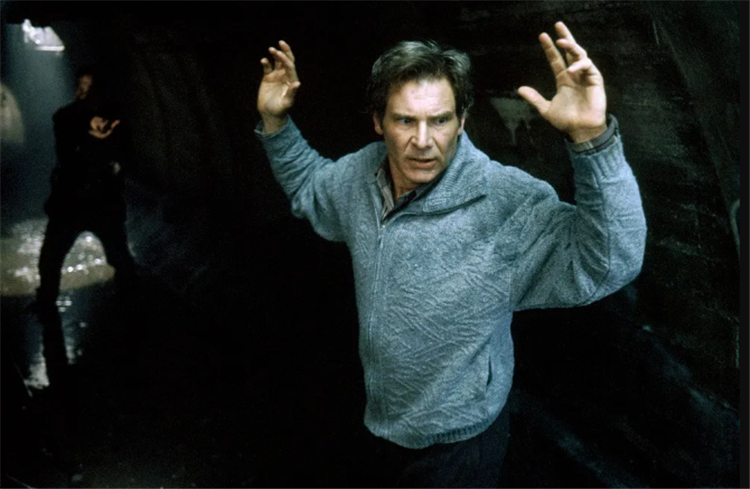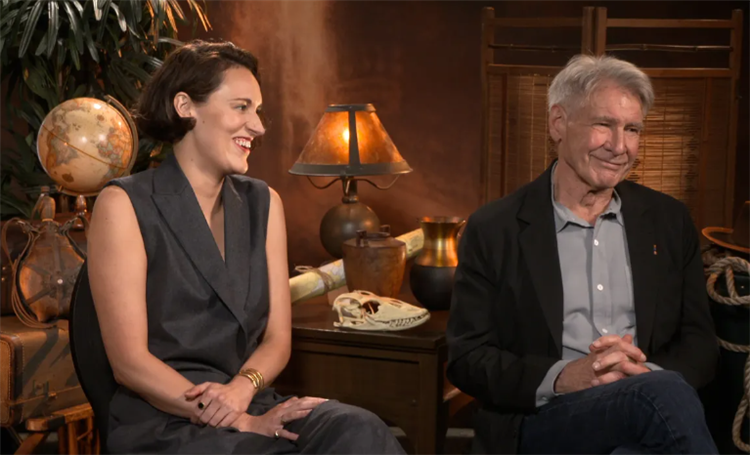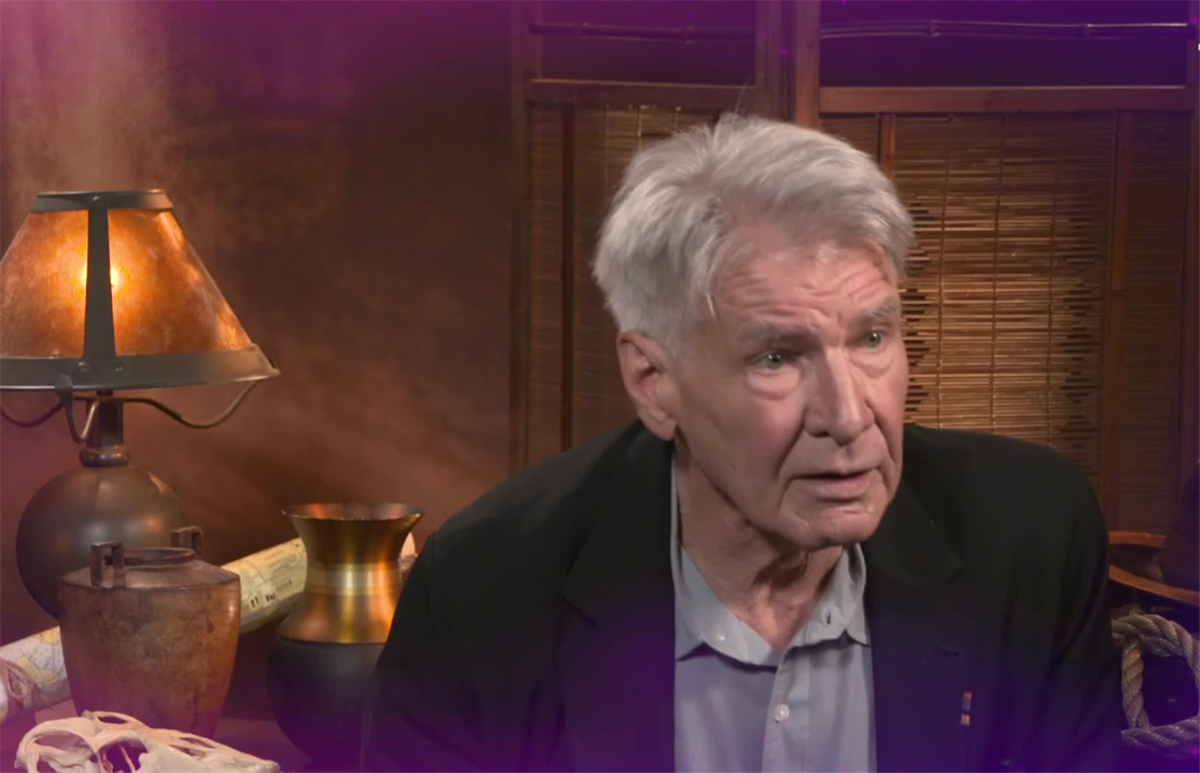Filmmaker Andrew Davis had a strong sense of déjà vu watching Harrison Ford elude capture in “Indiana Jones and the Dial of Destiny” by joining a ticker tape parade.
“I thought to myself, ‘That looks familiar,’ ” says Davis, who directed Ford in a similar scene three decades ago for “The Fugitive.”
In the thriller, Ford’s hunted Dr. Richard Kimble, wrongfully convicted for his wife’s murder, slipped away from pursuing U.S. Marshal Samuel Gerard (Tommy Lee Jones) by disappearing into Chicago’s St. Patrick’s Day parade.
The cunning getaway allowed Kimble to continue his desperate quest to find his wife’s real killer in the movie based on the 1963 TV series.
But there was no getting away from the accolades for 1993’s second-highest grossing film ($183 million) at the domestic box office that garnered seven Academy Award nominations, including best picture, and earned Jones a best supporting actor Oscar for his relentless and snarky Gerard.
Thirty years and a new 4K restoration later (“It’s like a whole new movie”), Davis shares some memories for Sunday’s anniversary.
‘The Fugitive’ began Harrison Ford’s career in parade-hiding
“We just did it documentary-style, grabbing what we could from the actual parade,” says Davis.
Ford plucked a green hat from the trash and slouched under a green jacket. Jones, leading his team furiously up and down the parade, was more noticeable.
“It wasn’t Indiana Jones walking in the parade. The way Ford was dressed, many people didn’t recognize him,” says Davis. “Tommy Lee Jones, who was jumping around, had just starred in ‘Under Siege’ and was much more noticeable.”
Davis used Chicago as a main location and character, receiving permission from the mayor’s office to shoot Kimble fleeing into the chaos of Chicago’s famed St. Patrick’s Day Parade. Both the pursuing marshals, led by Jones, and Ford were filmed with hand-held cameras during the festive march.
The scene came together perfectly with deft editing. It ended with Ford slipping away into the spectators as Jones searches for him in the same camera frame.
“That moment was without a cut,” says Davis. “It was fantastic.”
Could Dr. Richard Kimble, or anyone else, survive that ‘Fugitive’ dam dive?

The big stunt in “The Fugitive” involves a freight train crashing into a prison transport bus that flipped onto the tracks, allowing Kimble to escape. The one-time-only collision was filmed with staged explosives.
Kimble’s waterfall jump from the 225-foot high Cheoah Dam in Robbinsville, North Carolina, puts an exclamation point on the most famous “Fugitive” scene.
A seemingly trapped Kimble pleads, “I didn’t kill my wife” and the duty-obsessed Gerard responds with the classic line, “I don’t care.” While the dialogue was shot on a Chicago set, the action, including Ford peering over the edge of a platform perched above the dizzying rushing water, was real.
“He was looking right over the water, but he was wired up, he wasn’t going to fall,” Davis says.
A Kimble-dressed dummy did make the fall. The lifeless stand-in was filmed careening into the water.
“My editor Dennis Virkler called it ‘The Stickman’ and said that scene would never work,” says Davis. “But it worked. People believe it.”
There has been continuing online debate about whether anyone could have survived the fall. Davis believes the water breaks the fall for Kimble’s entry, allowing him to continue his escape.
“That water breaks the impact, he was almost flushed into the water below. There’s a possibility he could have survived,” says Davis. “And it’s a movie.”
Julianne Moore was supposed to play Harrison Ford’s romantic interest, until the love part got cut
Julianne Moore’s Dr. Anne Eastman tries to turn the wanted Kimble in after spotting him posing as a hospital janitor. But there was much more to the character, who was originally supposed to be Kimble’s love interest in later “Fugitive” scenes.
“The studio was pressuring us, there had to be a love interest. So there were supposed to be scenes where Kimble goes back to her apartment, he takes a shower. There’s this inference that they are connected,” says Davis, who joined producers in pushing back against the studio.
“It was going to ruin the movie because Kimble’s supposed to be mourning his murdered wife, looking for her killer,” says Davis.
The studio backed down and the scenes were dropped before they were shot. Davis says Moore understood the truncated role.
“The Fugitive” also features Second City improv alum Jane Lynch (“Glee”) in one of her first roles as Dr. Kathy Wahlund and a host of Chicago celebrity cameos. Chicago Bears linebacker Otis Wilson appears as a jail officer and then-local TV reporter Lester Holt (now hosting “NBC Nightly News”) grilled police, asking, “Who killed Kimble’s wife?”
Joey Pantoliano refused to die so Cosmo Renfro could appear in the sequel

During the climactic showdown shot in the bowels of the Chicago Hilton and Towers, agent Cosmo Renfro (Joey Pantoliano) is clocked in the head with a steel beam by villainous Dr. Charles Nichols (Jeroen Krabbé). However, the supposedly dead Pantoliano continued to move on the floor during the scene, which confused Ford.
“Harrison finally said, ‘What are you still moving for?’ And Joey said, ‘I want to be alive for the sequel,’ ” Davis recalls. “And Harrison said, ‘Well, there ain’t going to be a sequel because I’m not doing it.’ And Joey responded, ‘That’s all right, we’ll get another $20 million dollar (jerk) to chase around for the sequel.’ Harrison just started laughing.”
True to his word, Ford never starred in any sequel. But Jones brought back Gerard for 1998’s “U.S. Marshals.”
“The studio developed another project around Tommy,” says Davis. “So they brought Robert Downey Jr. in and Wesley Snipes as the villain, and they made that movie.”
Pantoliano’s never-say-die Cosmo Renfro lived to appear again in “U.S. Marshals.”
